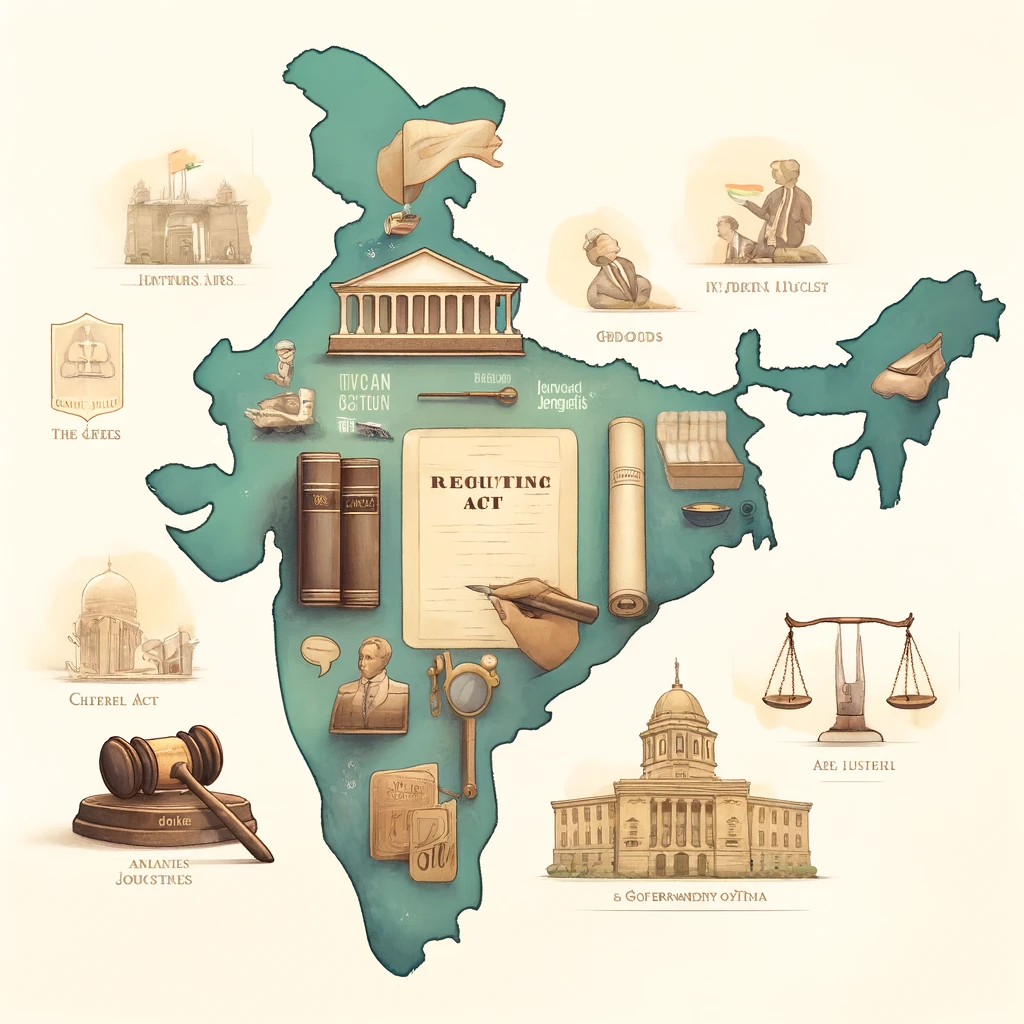The Indian Constitution is a product of historical events, debates, and reforms that shaped the political landscape of India. Its evolution reflects the country’s struggle for independence and the need for a structured legal framework to govern a diverse population. The Constitution, adopted in 1950, draws heavily from various legal systems worldwide but is uniquely adapted to India’s socio-political conditions. The roots of the Indian Constitution can be traced back to the Pre-independence Era, where colonial laws and reforms laid the groundwork for its development.
- The Pre-independence Era saw key acts like the Government of India Act 1935, influencing India’s constitutional framework.
- The Indian National Congress played a vital role in demanding constitutional reforms during the freedom struggle.
- The Constituent Assembly was formed post-independence to draft the final Constitution for a sovereign India.
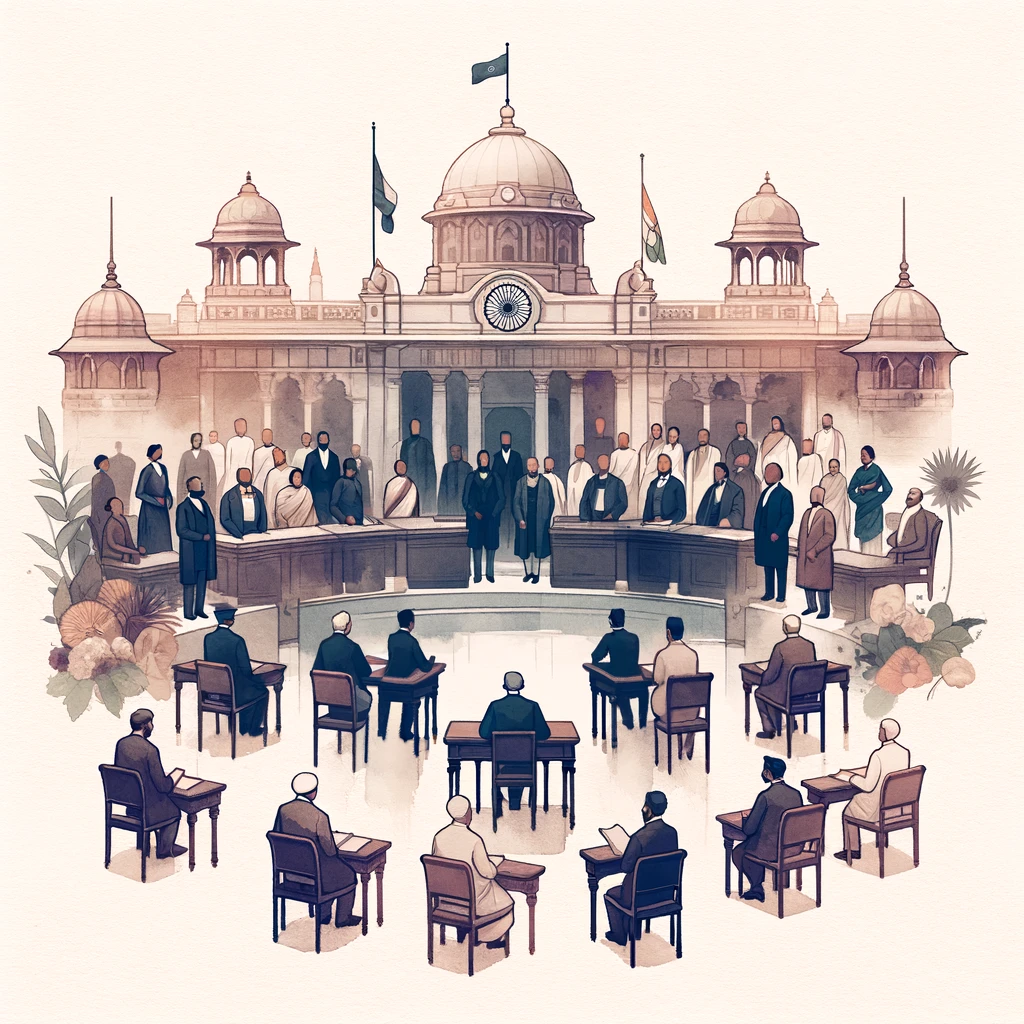
The Regulating Act of 1773
The Regulating Act of 1773 marked the first significant step towards the regulation of the East India Company’s administration in India by the British Parliament. Before this act, the Company had near-autonomous control over its affairs, leading to widespread corruption and maladministration.
- Governance Structure: The Act established a Governor-General of Bengal with supervisory authority over Madras and Bombay, along with a council of four members to assist in governance.
- Judicial Reforms: It laid the foundation for a formal judicial system by creating the Supreme Court of Calcutta, thus initiating the separation of executive and judicial powers.
- Parliamentary Oversight: The act mandated that all major Company decisions be reported to the British government, introducing a degree of accountability.
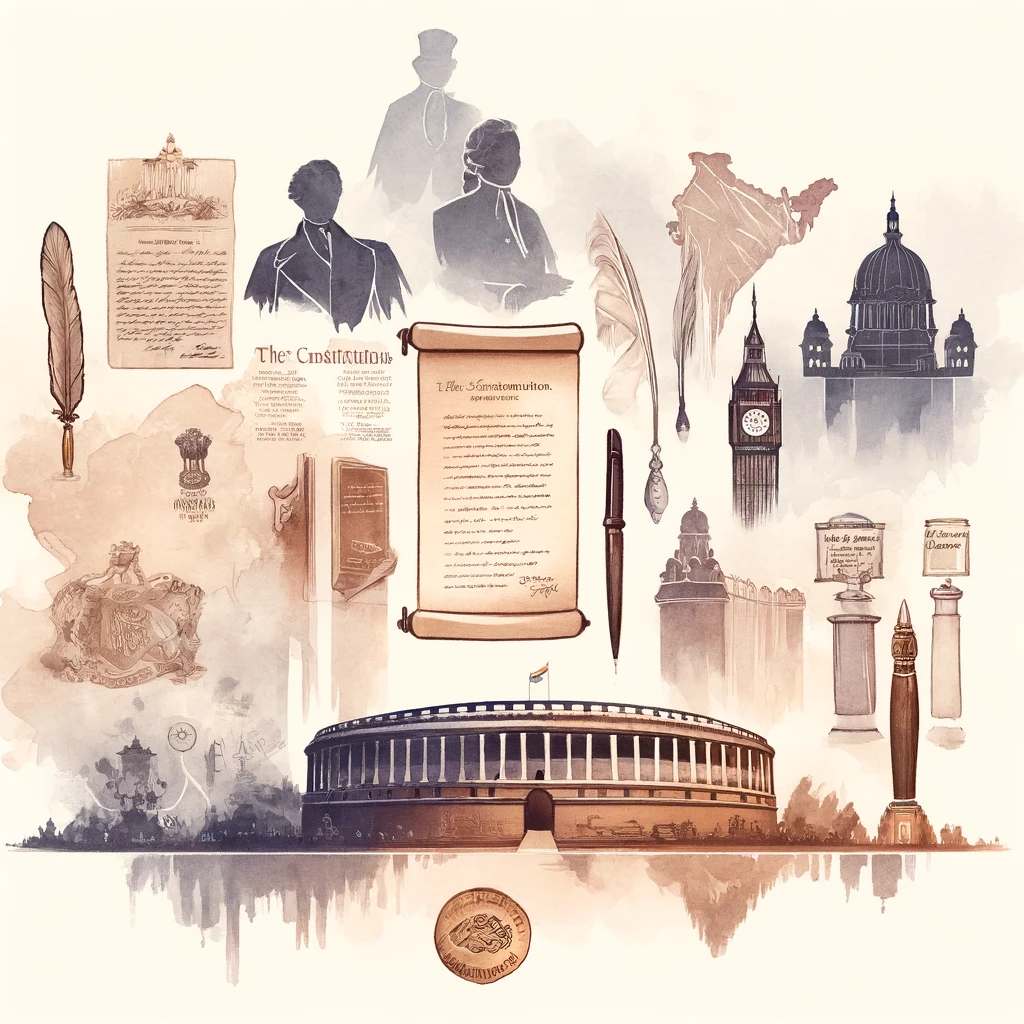
Pitt’s India Act of 1784
Pitt’s India Act of 1784 refined the regulatory framework set by the Regulating Act, establishing a dual system of control by the British government and the East India Company.
- Board of Control: The Act established the Board of Control in Britain, consisting of six members, including the Chancellor of the Exchequer and the Secretary of State, to oversee the Company’s civil, military, and revenue operations.
- Court of Directors: The Company’s Court of Directors was tasked with the day-to-day administration in India but under the close supervision of the Board of Control.
- Centralization of Power: The Governor-General’s power was enhanced, reinforcing centralized control, which laid the groundwork for more structured governance.
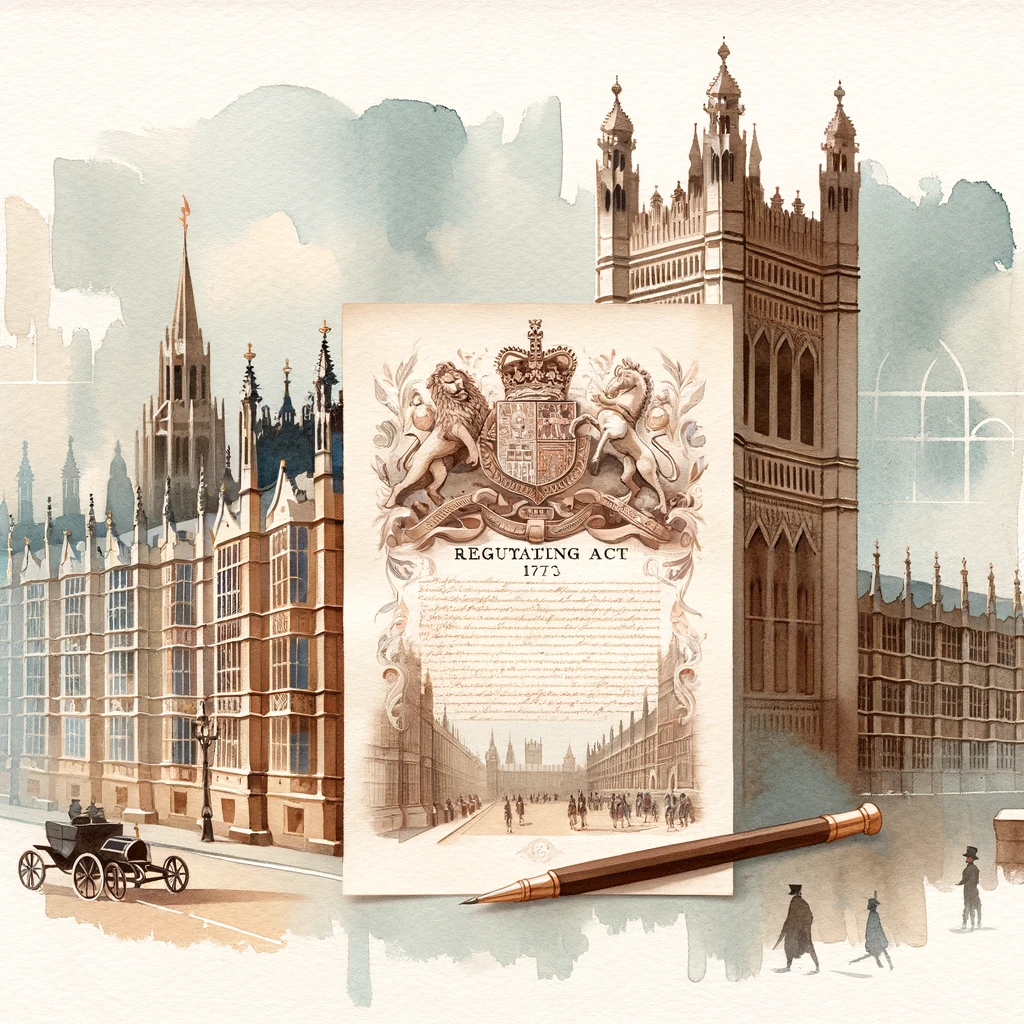
Charter Acts (1813, 1833, 1853): Gradual Introduction of Indian Representation and Codification of Laws
The series of Charter Acts passed in the 19th century played a crucial role in shaping the administrative and legislative framework of British India.
- Charter Act of 1813: This act ended the Company’s trade monopoly except for trade in tea and trade with China. It also allowed Christian missionaries to preach and teach in India, reflecting a shift towards a more diverse societal engagement.
- Charter Act of 1833: It marked a significant step towards centralized legislation by creating the position of the Governor-General of India with legislative power over all of British India.
- Charter Act of 1853: This act introduced open competition for the selection of civil servants, thereby making the administration more meritocratic. It also laid down the foundation for a legislative council, which included members who were not officials, hinting at the future inclusion of Indian voices.
These acts collectively introduced the idea of a centralized legislative authority and hinted at the inclusion of Indian representation in governance.

Indian Councils Acts (1861, 1892, 1909): Expansion of Legislative Councils and Inclusion of Indians
The Indian Councils Acts were pivotal in expanding the legislative process and gradually including Indian representation.
- Indian Councils Act of 1861: This act restored legislative powers to the provinces and expanded the Governor-General’s council to include non-official members. It marked the beginning of legislative devolution.
- Indian Councils Act of 1892: This act increased the number of non-official members in the legislative councils and allowed for limited representation of Indians through an electoral process.
- Indian Councils Act of 1909 (Morley-Minto Reforms): It introduced separate electorates for Muslims, thereby institutionalizing communal representation. This act also expanded the legislative councils and increased Indian participation.
These acts progressively expanded the legislative councils and introduced the principle of representation, setting the stage for a more inclusive governance structure.
Government of India Act 1919: Introduction of Dyarchy in Provinces
The Government of India Act of 1919, also known as the Montagu-Chelmsford Reforms, was a significant step towards self-governance.
- Dyarchy: This act introduced dyarchy in the provincial governments, dividing subjects into ‘transferred’ and ‘reserved’. The ‘transferred’ subjects were to be administered by Indian ministers accountable to the legislative councils, while the ‘reserved’ subjects remained under the control of the Governor and his executive council.
- Bicameral Legislature: It established a bicameral legislature at the center with the Council of State and the Legislative Assembly.
- Expansion of Franchise: The act expanded the franchise, allowing more Indians to vote, albeit still limited by property and education qualifications.
The introduction of dyarchy was a significant move towards involving Indians in the governance process, although it still retained significant control in British hands.
Government of India Act 1935: Foundation of Federal Structure and Provincial Autonomy
The Government of India Act of 1935 was the most comprehensive and significant act before Indian independence.
- Federal Structure: The act proposed a federation of British Indian provinces and princely states, although the latter did not join. Thus, the federation was never implemented.
- Provincial Autonomy: It granted autonomy to the provinces, allowing them to act as independent units with their governments and legislatures.
- Bicameral Legislatures: The act established bicameral legislatures in the provinces and expanded the franchise to include more Indian voters.
- Central Government: It retained central control over critical areas like defense, foreign affairs, and communications.
This act laid the foundation of a federal structure and provided for greater provincial autonomy, which influenced the eventual framing of the Indian Constitution.
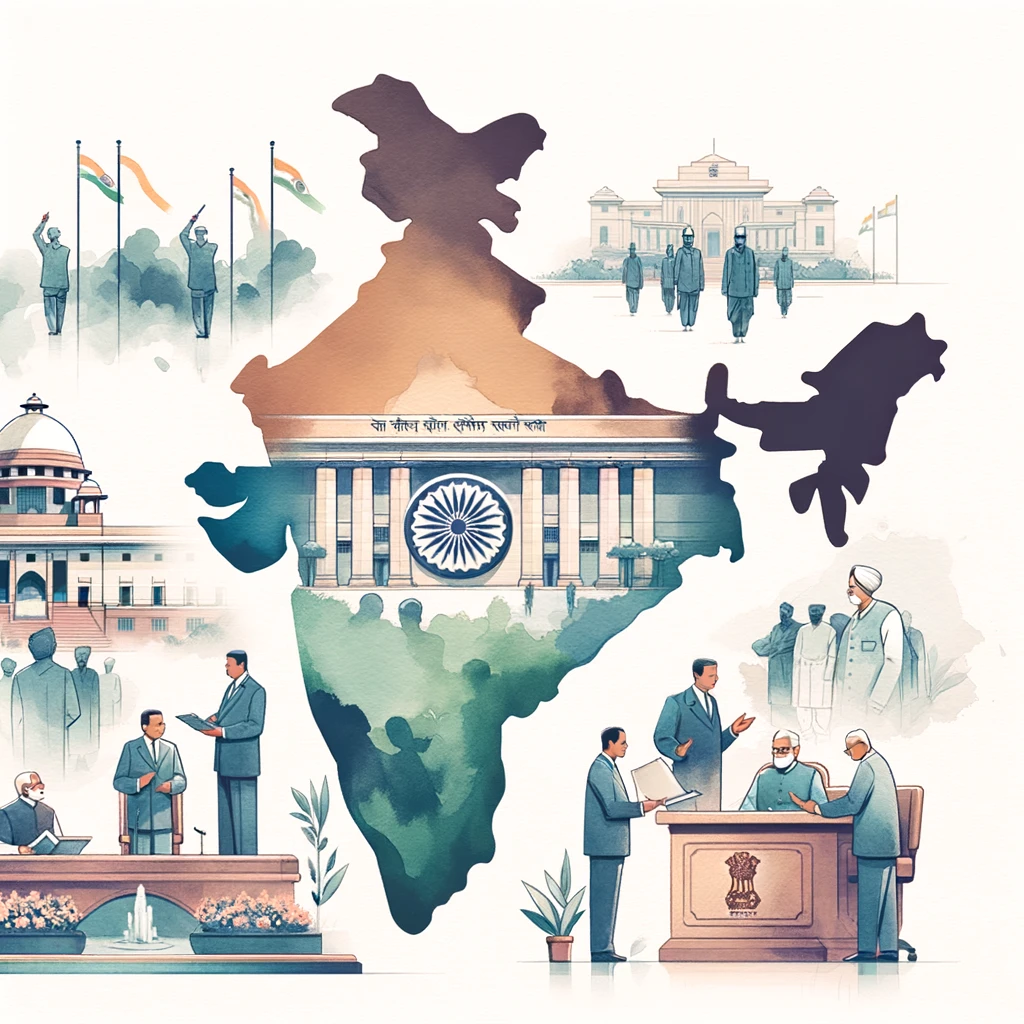
Conclusion
The evolution of the Indian Constitution during the pre-independence era was a gradual process. Each legislative act and administrative reform introduced elements of parliamentary control, centralized administration, legal codification, and representation. This historical evolution laid the groundwork for the eventual establishment of a democratic and federal structure in post-independence India. Understanding these steps is crucial for UPSC aspirants, as it provides insight into the constitutional and administrative legacy that shaped modern India.
| Evolution of the Indian Constitution UPSC Notes |
| 1. The Indian Constitution evolved through various Acts of British Parliament, starting from the Regulating Act of 1773 to the Government of India Act, 1935. 2. The Montagu-Chelmsford Reforms of 1919 introduced diarchy, giving limited power to Indian ministers in provincial governments for the first time. 3. The Government of India Act, 1935 provided the basis for federalism, provincial autonomy, and the establishment of a federal court. 4. The Constituent Assembly was formed in 1946, drafting the Indian Constitution with contributions from leaders like B.R. Ambedkar, Nehru, and Patel. 5. The Indian Constitution adopted various features from global constitutions, including parliamentary democracy from the UK and judicial review from the US. 6. Fundamental Rights and Directive Principles of State Policy were included to ensure individual freedoms and social justice. 7. The Indian Constitution is a living document, with provisions for amendments, enabling it to adapt to changing circumstances. 8. The Constitution, enforced on January 26, 1950, establishes India as a sovereign, socialist, secular, and democratic republic. |

